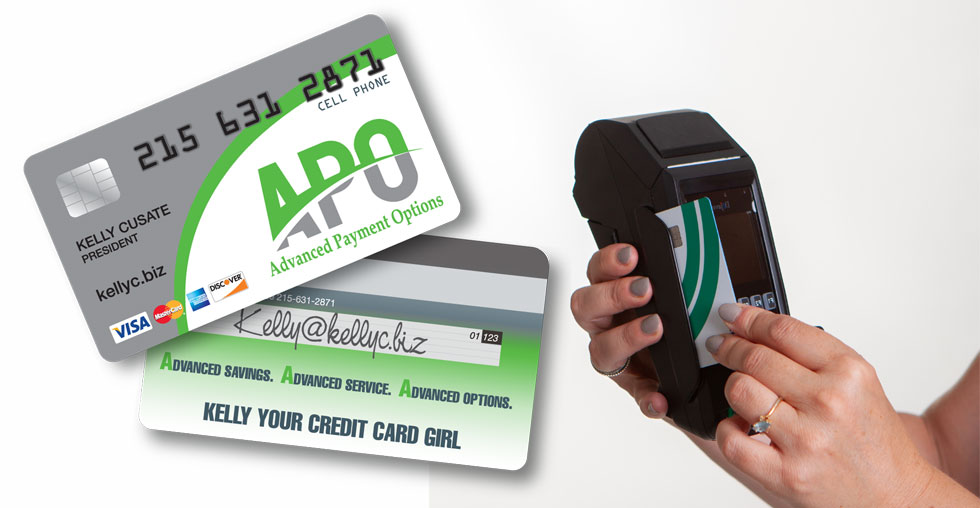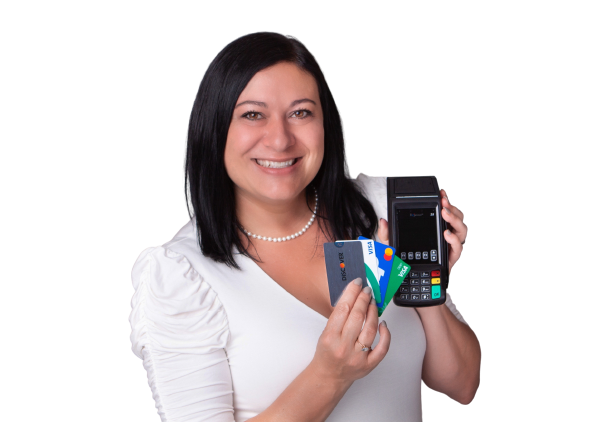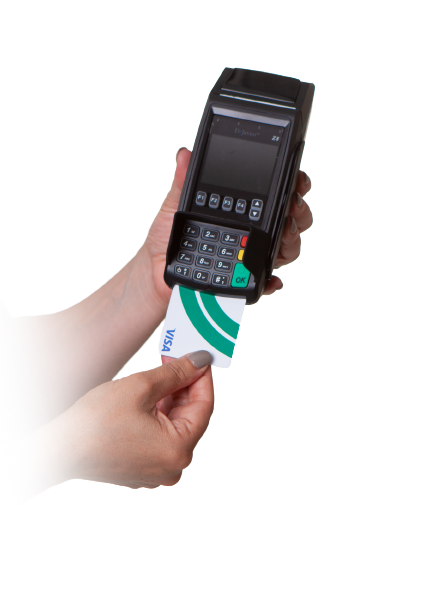POS system does more than just process payments—it’s the backbone of how small businesses operate efficiently. From managing inventory to enhancing customer experiences, choosing the right POS features can make a big difference. In this post, we’ll cover the ten most important features every small business needs to streamline operations, boost sales, and set the stage for growth.
Integrated Payment Processing
In today’s fast-paced business environment, offering efficient and user-friendly payment options can make or break customer experiences. A robust POS system equipped with integrated payment processing is essential for small businesses. It ensures smooth transactions, enhances trust, and improves operational workflow. This section highlights two critical aspects of integrated payment processing: multiple payment method support and secure transactions.
Multiple Payment Method Support

Customers today expect flexibility when it comes to payment options. From traditional debit and credit cards to digital wallets like Apple Pay or Google Pay, and even contactless payments, a POS system that supports multiple payment methods ensures you’re meeting a variety of preferences. Let’s face it—no one likes being told their preferred payment won’t work.
Having this flexibility not only enhances convenience for your customers but also increases your chances of closing a sale. Here’s why it matters:
- Improved Accessibility: Some customers rely solely on mobile wallets or contactless cards, especially younger consumers. Catering to these preferences keeps your business in step with trends.
- Faster Checkout: The shorter the wait, the happier your customers. Contactless and digital methods speed up transactions, reducing long queues.
- Higher Revenue Opportunities: Offering diverse payment options minimizes the risk of losing a sale because a customer couldn’t pay how they wanted.
By ensuring your POS system supports a multitude of payment methods, you’re setting your small business up for smoother operations and a customer-friendly experience.
Secure Transactions
Security isn’t just a nice-to-have—it’s essential. Every transaction is an opportunity for fraud or data breaches. A good POS system employs robust security features like encryption and PCI compliance, ensuring that sensitive payment details stay confidential.
Here’s how secure payment features protect your business and customers:
- Data Encryption: Sensitive information, such as card details, is encrypted and unreadable to unauthorized parties. Think of it as putting data in a safe no one can crack.
- PCI Compliance: PCI DSS (Payment Card Industry Data Security Standard) compliance ensures you’re meeting strict security regulations, building confidence with your customers.
- Fraud Reduction: Advanced fraud detection tools analyze transactions in real time, blocking suspicious activities before they escalate.
Statistics show that businesses lose billions annually due to fraud. Safeguarding transactions with secure features not only minimizes financial loss but also builds a reputation of trust. Customers want to know their data is in safe hands, and by prioritizing secure payment systems, you’re showing them you care.
Integrated payment processing isn’t just about taking payments—you’re also protecting sensitive information and ensuring smooth consumer interactions. Including these elements in your POS system is a no-brainer for small businesses looking to thrive.
Inventory Management
Efficient inventory management is the engine that keeps small businesses running smoothly. A well-designed POS system with features like real-time stock tracking and automated reordering ensures that you’re always well-prepared, avoiding the common pitfalls of overstocking or running out of essential products. Here’s why these features matter and how they can elevate your operations:
Real-Time Stock Tracking

Keeping tabs on your inventory in real time is like having a bird’s-eye view of your business. It gives you instant clarity on what’s in stock, what’s running low, and what’s not moving at all. This type of visibility is crucial, especially when dealing with multiple sales channels or physical locations.
Here’s how real-time inventory tracking can transform your business:
- Reduce Stockouts and Overstocking: With up-to-date data, you’ll know exactly how much of each product is available. No guesswork means you can avoid disappointing customers with out-of-stock items or sinking money into excess inventory.
- Streamline Operations: Real-time visibility leads to quicker decision-making. Whether it’s allocating stock to a high-demand location or adjusting your procurement strategy, you’re always ahead of the curve.
- Improve Customer Experience: Nobody likes waiting. By ensuring products are readily available, you’re building a reputation for reliability. That translates into happier, loyal customers.
- Error Reduction: Manual tracking often leads to errors that can snowball into operational headaches. Automated, real-time systems minimize human mistakes and keep your data accurate.
This feature isn’t just about convenience; it’s about staying competitive. In today’s fast-moving market, businesses that react faster to inventory fluctuations consistently outperform those that don’t.
Automated Reordering
Managing stock levels manually can feel like spinning plates—you’re always worried something will crash. Automated reordering takes this stress off your plate by using set thresholds to replenish stock levels. Think of it as having a personal assistant for your inventory.
Here’s why automated reordering is a game-changer:
- Lower Risk of Stockouts: Your system automatically generates purchase orders based on predefined minimum stock levels. This means you’ll always have the right products on hand without scrambling to fill gaps.
- Save Time and Money: Say goodbye to tedious manual calculations. Automated reordering saves time and ensures you’re ordering optimal amounts, reducing inventory carrying costs.
- Adapt to Demand Shifts: Many systems use historical sales data and demand forecasting to dynamically adjust reorder points. Seasonal trends or unexpected spikes in demand? No problem; your system has it covered.
- Better Vendor Relationships: Automated processes allow you to place timely and accurate orders, strengthening relationships with suppliers and reducing lead times.
Incorporating automated reordering into your POS system not only simplifies backend processes but also ensures you’re better prepared for growth. Fewer hiccups in inventory mean more focus on serving your customers.
Sales Reporting and Analytics
A strong POS system does more than handle transactions; it collects and organizes data that drives actionable strategies. For small businesses, sales reporting and analytics act like a compass, guiding operational decisions to boost revenue and efficiency. By tapping into these insights, you can identify trends, forecast demand, and fine-tune your approach to meet customer expectations.
Performance Tracking

Sales reports are like a snapshot of your business’s health. They break down which products are flying off the shelves and which ones are gathering dust. This level of visibility takes the guesswork out of managing inventory and ensures you’re focusing on the right products.
Imagine knowing your top-sellers instantly. You can restock them faster to avoid running out, keeping customers happy and revenue steady. At the same time, low-performing products don’t have to drain your resources. Use the data to reprice, promote, or phase them out.
Key benefits of performance tracking include:
- Improving Product Strategies: Reports help you pinpoint popular products and identify seasonal demand patterns.
- Optimizing Promotions: By knowing what products are underperforming, you can create targeted campaigns to move surplus inventory.
- Reducing Waste: Unpopular products often lead to overstock. Tracking performance lets you adjust purchasing decisions to reduce losses.
When you know what sells and when, your decisions become sharper and more profitable.
Customer Trend Analysis
Understanding customer behavior is the heart of crafting effective marketing strategies. With a POS system that offers detailed analytics, you can uncover what matters most to your customers—whether it’s favorite product categories, preferred brands, or even purchase times.
For instance, do your customers love a certain type of coffee on cold mornings, or do they buy more of a particular gift item during the holidays? These trends allow you to personalize promotions and precisely aim your marketing efforts. In turn, this deepens customer loyalty and boosts sales.
How customer trend analysis helps:
- Tailored Marketing: Use insights to craft campaigns that align with customer preferences.
- Improved Loyalty Programs: Data on purchasing frequency and order size can guide your loyalty rewards to hit the sweet spot for repeat purchases.
- Forecasting Demand: Trends help you prepare for busy seasons, ensuring you’re stocked with what your customers will buy most.
By analyzing customer habits and preferences, you shift from reactive to proactive, meeting customer needs before they even realize them.
Customer Relationship Management (CRM) Integration
Integrating a POS system with a Customer Relationship Management (CRM) tool is essential for businesses aiming to build lasting customer relationships. A CRM-enabled POS allows you to merge sales data with customer insights, unlocking opportunities to personalize experiences and foster loyalty. Here’s a breakdown of the most impactful benefits:
Purchase History Tracking: Personalize Customer Engagement

Understanding customer purchase behavior isn’t just about knowing what they buy—it’s about predicting what they want next. With purchase history tracking integrated into your POS system, every transaction adds valuable insight into customer preferences. This data fuels personalized marketing strategies, turning one-time buyers into repeat customers.
- Tailored Promotions: Is Anna buying the same skincare product every month? Send her a discount on her favorite item before she even considers switching brands.
- Upselling Opportunities: Cross-analyze purchase data to suggest complementary products, like pairing running shoes with moisture-wicking socks.
- Improved Service: Equip staff with real-time data so they can reference past purchases and make relevant recommendations, creating seamless in-store or online experiences.
When customers feel understood, their loyalty naturally grows. Tracking purchase history gives you the tools to offer thoughtful promotions that resonate.
Loyalty Program Integration: Keep Customers Coming Back
A loyalty program isn’t just a nice touch—it’s a proven way to incentivize repeat business. By integrating loyalty programs directly into your POS system, you eliminate hurdles for both your team and your customers, making rewards simple and appealing.
Here’s how integration benefits your business:
- Fast Enrollment: Signing up for loyalty rewards happens instantly at checkout, whether in-store or online, encouraging participation.
- Automated Rewards: Customers can accumulate points with every purchase, and the system tracks their balance without manual effort. Think of it as banking goodwill.
- Targeted Campaigns: Did a customer just redeem a coupon? Set up email campaigns to offer them related products or limited-time exclusive deals.
Loyalty programs go beyond points and perks. When connected to a CRM, you can customize rewards to reflect what each customer values most, from discounts on frequently purchased items to early access to new products. The result? Higher retention rates and customer satisfaction.
CRM integration transforms your POS system into a powerful tool for understanding and connecting with your audience. Whether you’re tracking purchase behavior or driving rewards programs, this feature ensures you’re not just meeting customer expectations—you’re exceeding them.
Employee Management Capabilities
A reliable POS system doesn’t just help small businesses process sales; it also serves as a crucial tool for managing employees effectively. By integrating employee management capabilities, these systems empower business owners to boost productivity, enhance security, and improve operational workflows. From tracking performance to setting access controls, let’s explore the key features that make this possible.
Access Permissions: Role-Based Security and Smooth Operations

A strong POS system allows you to assign role-based permissions, ensuring each employee has access to only what they need. Why is this important? It protects sensitive information, prevents errors, and reduces instances of internal theft. Think of it as giving your staff the right keys for the right locks.
Here are some advantages of using access permissions:
- Enhanced Data Security: Protect sensitive customer or business reports by restricting who can view or modify them.
- Prevent Unauthorized Discounts: Permissions ensure only managers can approve price adjustments or special offers.
- Accountability Tracking: Since actions are tied to specific users, you can trace issues directly back to the source.
For example, a cashier might only access sales processing functions, while a manager can run reports or adjust inventory. This segmentation not only safeguards your business but also helps staff focus on their roles without unnecessary distractions. The result? A higher level of trust amongst the team and better workflow efficiency.
Sales Performance Metrics: Turn Data into Actionable Insights
Wouldn’t it be helpful to know which team members are thriving and who might need a little guidance? With sales performance tracking built into your POS system, you gain a clear snapshot of employee productivity. It offers detailed breakdowns of metrics like sales volume, average order size, and conversion rates.
This information isn’t just for record-keeping—it’s invaluable for improving your operations. Here’s how:
- Identify Top Performers: Reward star employees or assign them to high-impact shifts.
- Performance Coaching: Use data to help underperforming staff improve through training or mentorship.
- Create Incentives: Metrics make it easy to set reasonable goals, whether through bonuses or fun competitions.
For instance, if your data shows an employee excels at upselling, you could use that skill to train others or feature them on busy days. On the flip side, consistent underperformance uncovered by metrics can highlight areas where an employee may need additional support.
A POS system that tracks sales metrics doesn’t just help you keep tabs on employees—it helps you foster growth in both individuals and the business as a whole. It builds transparency and accountability across the board, delivering benefits that go beyond the numbers.
Multi-Location and Omnichannel Support
Operating a small business with multiple locations or sales channels can be challenging without the right tools. A POS system equipped with multi-location and omnichannel support simplifies these complexities, empowering businesses to thrive both in-store and online. Let’s explore how these features can transform business operations.
Centralized Inventory Control

Keeping track of inventory across multiple locations is no small feat. Without a centralized overview, businesses risk stockouts, overstocking, or costly errors in fulfillment. A multi-location POS system provides you with real-time inventory data from every outlet on a single platform. Think of it as having a manager for each location, reporting back instantly.
Benefits of centralized inventory control include:
- Reduce Stock Discrepancies: Eliminate manual counting errors with automatic updates after each sale.
- Optimized Transfers: Quickly move products between locations based on demand, avoiding underperforming stock in one store while another runs out.
- Faster Decision-Making: Access precise data to reorder top-selling items and clear out slow-movers efficiently.
- Seamless Expansion: As you add new locations, integrating them into a unified system reduces onboarding time and ensures consistency.
For instance, if a popular item is running low at one store, centralized inventory management makes it easy to replenish from another. This boosts customer satisfaction and prevents missed opportunities. A robust POS system with multi-location support turns logistical challenges into smooth, daily operations.
Omnichannel Sales Tracking
In today’s world, customers shop through multiple channels—buying online, picking up in-store, or browsing on their phones. Managing this seamlessly is only possible with omnichannel sales tracking, which connects all points of sale into a single, unified system. Why juggle separate systems when you can have an overview that ties everything together?
Omnichannel sales tracking opens up several key advantages:
- Unified Business View: Track sales from physical stores, online platforms, and even third-party marketplaces in one dashboard.
- Accurate Financials: Ensure revenue, tax, and stock reports reflect all sales, no matter the channel.
- Consistent Customer Experience: Customers can check product availability before visiting or choose flexible purchasing options like “buy online, pickup in-store” (BOPIS).
- Optimize Marketing Efforts: Easily see which channels drive the most sales and refine campaigns to boost underperforming ones.
For example, imagine being able to track a customer who discovered a product on social media, purchased it online, and then picked it up at your store. A fully integrated system connects these touchpoints, providing you with insights to tailor future offers.
Omnichannel support ensures smooth operations and gives small businesses the power to compete with larger brands by delivering the seamless shopping experience today’s customers expect.
Promotions and Discount Management
An effective POS system can simplify the creation and management of sales promotions, making it a powerful tool for small businesses. From setting up customizable discounts to analyzing the effectiveness of marketing efforts, your POS should help you stay competitive and boost sales with minimal effort. Here’s how it can support your business success.
Customizable Discounts

Flexibility is key when running promotions. A robust POS system lets you create and apply discounts tailored to your needs. Whether you’re marking down prices for a specific product category or launching time-sensitive flash sales, the process should be quick and seamless.
Customizable discount features can include:
- Product-Specific Discounts: Apply markdowns to specific items or categories without impacting your entire inventory. Perfect for seasonal sales or clearance events.
- Time-Based Offers: Set discounts to apply only during specific periods, like happy hours or weekend promotions. These time-locked deals create urgency and drive customer traffic.
- Tiered Pricing: Offer percentage-based discounts when customers spend above a certain threshold—helping to increase average order value.
For example, imagine running a “back-to-school” sale. With an advanced POS, you can automatically reduce prices on school supplies starting Monday morning and remove the discount by Friday afternoon. These features save time and ensure accuracy, allowing you to focus more on engaging with customers and less on backend logistics.
By streamlining the process of creating and implementing promotions, you can experiment more confidently with strategies to attract and retain customers.
Performance Evaluation of Promotions
Running a successful promotion doesn’t stop at setting discounts—measuring its impact is equally important. A quality POS system provides in-depth data on how your promotions are performing, helping you fine-tune your marketing tactics moving forward.
Here’s how analyzing promotion performance benefits your business:
- Understand ROI: Determine whether the profit generated by a promotion justifies its costs. Metrics like incremental sales and total revenue help paint a clear picture.
- Identify Sales Lift: Analyze spikes in unit sales during promotional periods. Did your “buy one, get one free” offer double sales, or just move inventory that was already popular?
- Customer Behavior Insights: Understand how promotions influence buying habits. For example, track if discounts brought in new customers or encouraged repeat visits.
- Avoid Cannibalization: Check whether promotional sales came at the expense of other product categories. If discounted coffee beans decreased sales of your premium blends, you’ll want to reassess your strategy.
The insights don’t end there. POS systems often allow you to segment data by store location, time, or customer demographics. For instance, you can evaluate whether a weekend sale performed better at your downtown location versus your suburban store.
Having clear data gives you the tools to adjust your future promotions. If something worked exceptionally well, you’ll want to replicate it. If not, the performance metrics can guide refinements to your strategy.
With promotion and discount management tools, your POS system goes beyond transactional support—it becomes a dynamic player in your growth strategy.
Third-Party Integration
Modern POS systems are no longer just tools for processing transactions—they’re powerful hubs that can connect with other platforms to streamline operations and improve decision-making. By integrating your POS with external systems like accounting software and e-commerce platforms, you can save time, reduce errors, and maintain consistent data across your business. This section covers two key integrations that every small business should consider.
Accounting Software Integration

Managing business finances can be one of the most challenging aspects of running a small business. That’s where integrating your POS with accounting software like QuickBooks comes into play. This connection ensures your sales data, expenses, taxes, and inventory costs flow seamlessly into your accounting system. No more manual entry or juggling spreadsheets.
Here’s why this integration matters:
- Automated Data Entry: Sales transactions are instantly recorded in your accounting software, saving time and reducing input errors.
- Simplified Tax Preparation: Tax information, such as sales tax collected, is consolidated and ready for accountants when filing season rolls around.
- Real-Time Financial Overview: Gain immediate insights into your revenue, profit margins, and expenses, keeping your financials up to date.
- Improved Accuracy: Minimizing manual processes means a lower risk of discrepancies or costly mistakes.
For example, let’s say your POS tracks thousands of transactions monthly. Without integration, you’d need to manually transfer this data to your accounting software—a recipe for mistakes and wasted hours. With integration, every sale is automatically logged, giving you a clear picture of your cash flow while keeping your books in order.
E-commerce Platform Connectivity

For businesses that sell products online and in-store, connecting your POS to e-commerce platforms like Shopify or WooCommerce is essential. This integration bridges the gap between physical and digital sales, creating a smoother experience for both you and your customers.
Benefits of e-commerce platform connectivity include:
- Real-Time Inventory Updates: Stock levels automatically sync across your channels, reducing the risk of overselling or stockouts.
- Centralized Order Management: Online and in-store orders appear in one system, allowing for efficient fulfillment.
- Unified Sales Reporting: Analyze performance across all channels, from products sold online to those picked up in-store, for better business insights.
- Customer Convenience: Features like “buy online, pick up in-store” (BOPIS) are easier to implement with seamless data sharing.
Imagine a customer buys a product online at night and picks it up at your store the next morning. A POS integration ensures the item’s availability is updated in your inventory and that the sale reflects correctly in your system. It eliminates the need for manual adjustments and streamlines the entire shopping experience.
By integrating your POS with accounting and e-commerce tools, you’re eliminating silos and enabling a more cohesive, scalable business system. These integrations aren’t just upgrades—they’re necessities for staying competitive in today’s market.
Mobile and Cloud-Based Capabilities
In today’s fast-moving world, small businesses need tools that are just as agile as they are. Mobile and cloud-based features in POS systems enable owners to keep pace with customer demands while simplifying day-to-day operations. These capabilities bring flexibility, accessibility, and efficiency to the forefront, ensuring businesses can operate smoothly from anywhere.
Mobile POS for On-the-Go Transactions

If you’re meeting customers on their turf—whether at pop-up shops, farmers markets, or outdoor events—a mobile POS system is indispensable. These systems allow you to process sales from virtually anywhere using a smartphone or tablet connected to a card reader. No bulky hardware or static setups are required.
Here are some ways mobile POS systems improve transaction efficiency:
- Faster Checkout: Speed is everything. With a mobile system, staff can process payments instantly, even in high-traffic situations.
- Payment Flexibility: Accept credit, debit, mobile wallets, and even contactless payments, ensuring customers can pay their way.
- Streamlined Service: Instead of directing customers to a counter, you can bring the checkout process to them for a more personal experience.
For instance, a food truck owner can take payments while customers watch their orders being prepared—reducing wait times, increasing satisfaction, and keeping the line moving. Mobile POS gives you the agility to meet customers wherever they are.
Remote Accessibility
Cloud-based POS systems put your business in your pocket. How? By storing data securely online, these systems free you from being tied to a specific physical location. Whether you’re running errands or on vacation, you can log in through any internet-connected device and stay in control.
Why does this matter? Let’s break it down:
- Real-Time Insights: View your sales numbers as they come in. This up-to-the-minute data helps you make informed decisions, like preparing for peak times or adjusting inventory on the fly.
- Seamless Updates: Forget manual software updates—they’re automatic with cloud systems, keeping your tools up-to-date without extra effort.
- Multi-Location Control: Running multiple stores? A cloud-based system allows central management of sales, stock, and promotions without shuttling between locations.
Imagine being away for the weekend and needing to check the sales report from Friday night. With a few clicks, you have full visibility into transactions, inventory, and even employee clock-ins. It’s like carrying your storefront in your back pocket.
For small businesses looking to stay nimble and responsive, mobile and cloud-based POS capabilities are not just nice to have—they’re a must. These systems deliver the tools you need to keep up with modern demands, streamline operations, and serve your customers more effectively.
User-Friendliness and Customization
Investing in a POS system that’s intuitive and adaptable can make a huge difference for small businesses. It’s not just about simplifying transactions; it’s about creating an environment where employees can work confidently and efficiently while offering features that grow with your business. Let’s explore why ease of use and scalability are essential in any POS system.
Ease of Use: Importance of a Clean, Straightforward Interface

A user-friendly POS system can be the difference between a smooth workday and chaotic, avoidable mistakes. Think about your team—especially new or part-time staff who may not have extensive technical expertise. A clear, easy-to-navigate interface means less time spent learning and more time focusing on what matters: serving customers.
Here’s what makes a system truly user-friendly:
- Intuitive Design: Functions like scanning items or applying discounts shouldn’t require a manual. Simple layouts and smart visual cues ensure that tasks remain efficient and error-free.
- Customizable Dashboards: Giving employees quick access to their most-used features speeds up the checkout process.
- Training Mode: Some systems even include built-in training modes, which allow new hires to practice without impacting real data.
When your staff feels confident using the system, productivity naturally increases. Whether they’re handling rush-hour crowds or engaging with customers on the floor, a straightforward system keeps things running seamlessly.
Scalability Features: Customizing for Business Growth
Every small business dreams of growing, and your POS system should be ready to grow with you. Scalability and customization go hand in hand—making sure your system adapts to changes, rather than holding you back.
Consider these key customization benefits:
- Flexible Features: Start with the essentials and add modules as your needs evolve, such as loyalty programs, advanced analytics, or inventory tracking.
- Adaptability: Whether you’re expanding to multiple locations or integrating e-commerce, a good POS system scales without extra hassle.
- Tailored Reports: Custom reporting tools allow you to see the exact data you care about—whether that’s quarterly sales trends or hourly performance metrics.
For instance, if you’re a café adding a new location, your POS should effortlessly connect inventory across both stores while tracking individual performance metrics. Similarly, a retail shop moving into online sales would benefit from a system that syncs inventory and orders across both physical and digital platforms.
A scalable, customizable POS system is like having a toolset that grows with your business. Instead of hitting roadblocks when you broaden your operations, you’ll have the confidence that your system is built to handle the changes.
Offline Modes for Uninterrupted Operations
Every small business faces the occasional hiccup, whether it’s an internet outage or operating in a location with weak connectivity. That’s where a POS system with offline functionality becomes a lifesaver. This feature ensures your business can continue running without interruptions, keeping sales moving and customer satisfaction intact. Offline capability doesn’t just protect your operations during downtime—it ensures your customers never experience a service delay.
Sync Upon Reconnection
When your POS system operates in offline mode, all transaction data gets securely stored locally. Think of it like having a digital notepad that keeps track of every detail without needing an internet connection. Once you’re back online, the system automatically syncs this data with your central database. This ensures your records stay up-to-date without requiring manual input.
Here’s how this works:
- Secure Local Storage: Transactions, inventory updates, and customer data are temporarily encrypted and stored locally on the device.
- Seamless Syncing: The moment the internet reconnects, all stored data is securely transmitted and synchronized with your cloud database or payment processor.
- Payment Authorizations: Credit card payments processed offline are queued and authorized once the connection is re-established, minimizing disruptions.
For example, imagine running a retail shop during a sudden Wi-Fi outage. Your POS system will process payments as usual, even issuing receipts. Once the connection returns, all the payment details and inventory changes are updated without lifting a finger. It’s business continuity at its finest.
Minimal Downtime Ensured
Operating in an area with spotty internet? Or perhaps you take your business on the road to markets or pop-up events? Offline modes are designed to thrive in these environments. They’re especially useful for businesses in remote or high-traffic situations where connectivity can be unpredictable.
This feature benefits businesses by:
- Supporting Remote Locations: Whether you’re running a food truck, participating in a trade show, or opening a satellite location in a rural area, offline capabilities let you serve customers without any hiccups.
- Reducing Stress During Outages: There’s no need to halt sales or turn customers away due to an internet issue. The system keeps running as if nothing happened.
- Improving Speed and Reliability: Offline processing removes the dependency on live network communication, often speeding up transactions.
For instance, a food truck owner at a busy festival might struggle with overloaded networks. Instead of fumbling to reconnect to Wi-Fi, the POS system ensures regular operation, letting them focus on serving happy customers. Later, when the system reconnects, all inventory and sales data sync automatically.

Offline modes aren’t just a convenience—they’re an essential feature for businesses that value reliability. With this capability, your operations are ready to tackle unexpected outages or run smoothly in challenging locations.
Conclusion
The right POS system is more than just a tool—it’s the foundation for smooth operations, satisfied customers, and informed decision-making. Whether it’s integrated payment processing, real-time inventory management, or sales analytics, these features are essential for navigating the challenges of running a small business.
Before investing in a POS system, take the time to identify your business’s unique needs and growth goals. Look for a solution that aligns with your operations today and can scale as you expand tomorrow.
With the right system in place, you’ll not only streamline day-to-day tasks but also gain valuable insights that position your business for long-term success.







